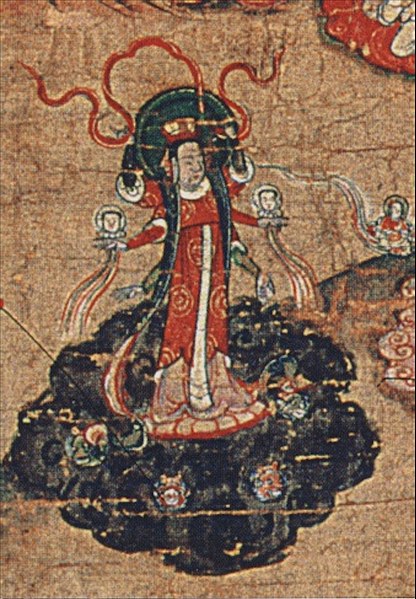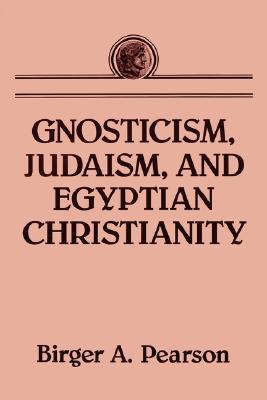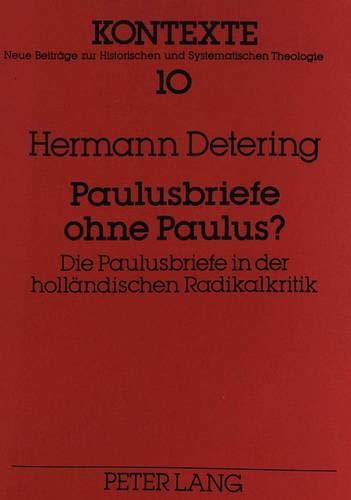
Was a crucifixion in heaven possible? conceivable?
But the following, again, is the cause of men’s dying: A certain virgin, fair in person, and beautiful in attire, and of most persuasive address, aims at making spoil of the princes [= archons] that have been borne up and crucified on the firmament by the living Spirit . . . .
Acta Archelai 8, describing a third century Manichean answer to the question, Why death?
What gave rise to Gnosticism from within Judaism?
 Birger Pearson’s answer is very similar to what I think led to the emergence of Christianity from within Judaism. If gnostics fell away from Judaism by rejecting its god as a blind and ignorant Demiurge who gave a law that enslaved its followers to the ways of the flesh, Christianity offered a positive response to similar circumstances, a new covenant grounded in an allegorical revision of the old rather than an outright rejection of it:
Birger Pearson’s answer is very similar to what I think led to the emergence of Christianity from within Judaism. If gnostics fell away from Judaism by rejecting its god as a blind and ignorant Demiurge who gave a law that enslaved its followers to the ways of the flesh, Christianity offered a positive response to similar circumstances, a new covenant grounded in an allegorical revision of the old rather than an outright rejection of it:
One can hear in this text echoes of existential despair arising in circles of the people of the Covenant faced with a crisis of history, with the apparent failure of the God of history: “What kind of a God is this?”‘ (48,1); “These things he has said (and done, failed to do) to those who believe in him and serve him!” (48,13ff.). Such expressions of existential anguish are not without parallels in our own generation of history “after Auschwitz.”
Historical existence in an age of historical crisis, for a people whose God after all had been the Lord of history and of the created order, can, and apparently did, bring about a new and revolutionary look at the old traditions and ‘assumptions, a “new hermeneutic”. This new hermeneutic arising in an age of historical crisis and religiocultural syncretism is the primary element in the origin of Gnosticism.
Pearson, Birger. Gnosticism, Judaism, and Egyptian Christianity. Minneapolis: Augsburg Fortress Publishers, 1990. p. 51
How to explain Paul’s letters if we see signs of Philo and Seneca in them?
Philo:
Rom 1:20: proof of God’s existence from his works, cf. Praem 7;
1:23: transforming the glory of the incorruptible God into a perishable image, cf. VitMos III,20;
to bestow the glory of the imperishable on the vapourless living creatures, cf. Ebr 28;
1:25: serving the creature instead of the Creator, cf. Som 1,14;
4:3: Abraham as a type of the righteousness of faith, cf. Her 18;
5:12 and 7: sin dwells in the flesh and brings forth death, cf. Migr 9.; Gig 7.; VitMos III. 17; Gig 3;
8:17: Christians as κληρονόμοι θεοῦ, cf. των θείων άγαθων; Her 14;
8:29: Son of God as πρωτότοκος ἐν πολλοϊς άδελφοΐς, cf. Conf 28;
11:16ff: Parable of the olive tree, cf. Creatione principum 6. “Here the borrowing from another model is evident especially from the forced, but according to the new use unavoidable transformation, that wild branches are grafted into the noble olive tree, while in the whole world the reverse is usually done “191;
I Cor 3:1-2: Christians as sarcics who must be nourished with milk, cf. Omn Prob Lib 22;
3:16: the human soul as the dwelling place of the Spirit of God, cf. Cher 29.30;
7:21.22: the same understanding of freedom as e.g. in Omn Prob Liber;
9:24.25: the image of the athlete common in Philo, cf. Omn Prob Lib 17; Leg All 11.26;
13:12: the image of the mirror, cf. Det 31;
II Cor 2:16: where, “as in Philo, there is a double hearing of the divine commands, one to the harm, another to the benefit of the soul… “192; cf. Mut 3;
Gal 3:16: from the singular σπέρμα Paul infers the one descendant of Abraham, Jesus Christ – from the singular σπέρμα (Gen 17:16) Philo infers “that the highest is a singular”; cf. Cour 26;
4:9: νυν δέ γνόντες θεόν, μάλλον δέ γνωσθέντες ύπό θεού, cf.Cher 32: γνωριζόμεθα μάλλον ή γνωρίζομεν.
And Seneca:
Rom 1:23 (perversity of paganism in the worship of God): sacros, immortales, inviolabilesque deos in materia vilissima atque immobili dedicant. Habitus illis hominum, ferarumque et piscium, quidam vero mixtos ex diversis corporibus induunt (de superstitionibus in Augustin CivD VI, 10).
7:1-22 (Death as a correlative of “flesh”): haec quae vides ossa circumvoluta nervis, et obductam cutem, vultemque et ministras manus et cetera quibus involuti sumus, vincula animorum tenebraeque sunt. Obruitur his animus, offuscatur, inficitur, arcetur a veris et suis, in falsa coniectus: omne illi cum hac came grave certamen est, ne abstrahatur et sidat: nititur illo, unde dimissus est (Consolatio ad Marciam 24).
5:12: (Death as κατάκριμα)…in omnes constitutum capitale supplicium et quidem constitutione iustissima (nat. 11,9).
8:3 (Spirit as the source of good): Considéra tu itaque, an id bonum vocandum sit, quo Deus ab homine vincitur. Summum bonum in animo constituamus…non est summa felicitatis nostrae in came ponenda (epist.74). While Seneca speaks of the human spirit, however, Paul means the Holy Spirit.
8:23; II Cor 5:4 (groaning for salvation): animus qui, gravi sarcina pressus, explicari cupit et reverti ad ilia quorum fuit. Nam corpus hoc animi pondus ac poena est, premente illo urgetur, in vinculis est, nisi accessit philosophia, et ilium respirare rerum naturae spectaculo iussit, et a terreris dimisit ad divina (epist. 6).
8:28 (But we know that to those who love God all things are for the best): sed iam procedente oratione ostendam, quam non sint quae videntur, mala. Nunc illud dico, ista quae tu vocas aspera, quae adversa et abominanda, primum pro ipsis esse, quibus accidunt, deinde pro universis quorum maior diis cura est quam singulorum.
Before: Deus…bonum virum in deliciis non habet, experitur, indurat, sibi ilium praeparat. – Quare multa bonis viris adversa eveniunt? Nihil accidere bono viro mali potest (De providentia 3.1.2.).
12:19 (Do not avenge yourself): inhumanum verbum est, ut quidem pro iusto receptum, ultio (De ira 11.32). The motivation in Rom is also the same: primam iram non audebimus oratione mulcere, surda est et amens: dabimus illi spatium. Remedia in remissionibus prosunt.
13:14, Gal 3:27 (To put on someone): indue magni viri animum, et ab opinionibus vulgi secede paulisper (epist. 67).
I Cor 3:21 (all things are yours): omnia illius esse (Ben VII.8)
6:9 (body as temple of the spirit): non templa illi (Deo) congestis in altitudinem saxis struenda sunt, in suo cuique consecrandus est pectore; also: sacer intra nos spiritus sedet.(Fragment in Lactantius, Inst VI.2; epist. 41).
7:22 (“spiritual declaration of freedom of the Christian slave”): Servus est? sed fortasse liber animo; see also Ben III.20.
9:24 (images from the gymnastic competition): epist 78.
12:20 (Body of Christ): quid si nocere velint manus pedibus? manibus oculi? ut omnia inter se membra consentiunt, quia singula servari totius interest, ita homines singulis parcent, quia ad coetum geniti sumus (De ira 11.31).
Ch. 13 (Hymn of praise to love): Humanitas vetat superbum esse adversus socios,…nullum alienum malum putat, bonum autem suum id maxime, quod alicui bono futurum est, amat (epist. 88).
II Cor. 5:1ff (body as tent house): nec domum esse hoc corpus, sed hospitium (epist.
II Cor 4:7-11; I Cor 4:9-13 (peristasis catalogue): sic sapiens est artifex domandi mala. Dolor egestas, ignominia, career, exilium, et ubicunque horrenda, cum ad hunc pervinere, mansueta sunt, and: quid ergo inquis: mortem, vincula, ignés, alia tela fortunae non timebit? Non: since enim ilia non esse mala, sed videri, omnia ista humanae vitae formidines putat. Describe captivitatem, verbera, catenas, egestam et membrorum lacerationes vel per morbum vel per iniuriam: et quidquid aliud attuleris inter lymphaticos metus numerat (see also Rom 8:; epist.8).
Gal 2:19; 5:24-6:14; Rom 6:6 (“cross”): hi qui in se ipsos animadvertunt, quot cupiditatibus tot crucibus distrahuntur (De vita beata 19). Gal 6,2 (one bears the other’s burden): homo in adiutorium mutuum generatus est (De ira 1,5).
The above are identifications of Philo and Seneca noted by Rudolf Steck. The list is copied and translated from Detering, Hermann. Paulusbriefe ohne Paulus?: Die Paulusbriefe in der holländischen Radikalkritik. Frankfurt am Main ; New York: Peter Lang GmbH, Internationaler Verlag der Wissenschaften, 1992. pp. 210-214.
If you enjoyed this post, please consider donating to Vridar. Thanks!


I was searching the passage of Acta Archelai, but I have found this, without a reference to a virgin:
Tunc vivens spiritus creavit mundum, et indutus alias tres virtutes, descendens eduxit principes et crucifixit eos in firmamento, quod est eius corpus sphera.
Τότε τò ζῶν πνεῦμα ἔκτισε τὸν κόσμον, καὶ αὐτò φορέσαν ἑτέρας τρεῖς δυνάμεις, κατελθòν ἁνήνεγκε τοὺς ἄρχοντας καὶ ἐσταύρωσεν ἐν τῷ στερεώματι, ὅ ἐστιν αὐτῶν σῶμα ἡ σφαῖρα.
Curiously, the English translation has not “crucified” but “settled”, despite of the fact that the original Greek is ἐσταύρωσεν :
Then the living Spirit created the world; and bearing in himself three other powers, he came down and brought off the princes, and settled them in the firmament, which is their body, (though it is called) the sphere.
The function of the crucifixion here is clearly “to fix” forever the archontes in the sky. As fixed stars. Hence: the crucifixion as symbol of the attachment to vile matter (cfr Philo, On the Posterity of Cain and His Exile 17.61, where he compares souls being attached to bodies to men being attached to crosses via crucifixion).
Do you really believe Philo was ignorant of astrological information? Clearly (at least to me) the two main sources for both the OT and the NT were (1) Scripture [which is hardly well defined in Centuries around the 1 CE] and the oft repeated “The Pattern on the Mount” or “The Pattern in the heavens”.
During the Herodian project to reconstruct and expand the Temple Mount [circa 19-20 BC] the axis of the Western Wall was aligned with the second brightest start Canopus.